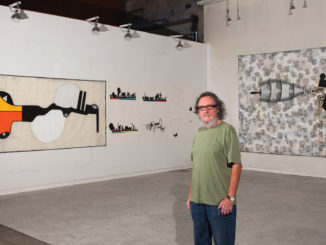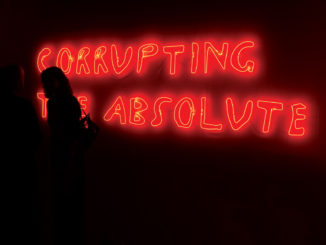 Among all different events that happened during Art Basel Miami Beach 2007, The Cane Art Fair presented by the Department of Art and Art History of the University of Miami became a major success. The fair took place at the UM’s Project Space in the Wynwood Art District, and it featured the works of a great number of faculty members and artist students. For those who still await to see what other new pieces are included in the rotating exhibition, a new version of the show will be open on January 12th, 2008.
Among all different events that happened during Art Basel Miami Beach 2007, The Cane Art Fair presented by the Department of Art and Art History of the University of Miami became a major success. The fair took place at the UM’s Project Space in the Wynwood Art District, and it featured the works of a great number of faculty members and artist students. For those who still await to see what other new pieces are included in the rotating exhibition, a new version of the show will be open on January 12th, 2008.
According to gallery director Logan Beitmen, “the positive attention and praise our artists received from collectors, dealers, and curators surpassed everybody’s expectations.” The exhibition compiled pieces made in diverse media, including installation, painting, drawing, and photography that perfectly suited into the curator’s criteria. The artists’ works were spread out wisely all over the place. Some of them, created under the concept of interactivity, gave the public the opportunity to intervene and become actively involved in the spectacle.
Artworks were warmly received by the Miami audience as well as by major collectors from around the world. One of the public’s favorite pieces was an inflatable white elephant made by Billie Grace Lynn, an outstanding professor at the University of Miami. The installation, called Graffiti Elephant, submissively gave in to people’s desires like Marina Abramovic once did in Rhythm 0,1974, her most famous performance to date.
The audience painted figures, wrote phrases, or just took pleasure in decorating the animal‘s body. Another motivating work consisted of three framed paintings on the wall, depicting flowers that had been covered by a thick layer of blue, red and green pigments. Kelly Flynn presented iLatex, a series of photos with images of the artist’s body painted in liquid latex. Superman appeared in one of them, a large print that featured Flynn impersonating the popular American hero. This Super(wo)man ripped the latex letter S on her chest as if she were breaking down with old-fashioned myths of superhuman powers. A burned plywood wall piece by Rob Stern drew into the style of Jackson Pollock. The artist offered a post-modern approach of the action painting, using molten glass instead of pigment.
“The current administration at UM has been extraordinarily supportive and is largely responsible for our success,” says Beitmen. Regarding the role played by the institution, the young gallery director points out the determining influence the University management has had on raising the profile of the Art Department and contributing to the development of its activities over the past several years.



Be the first to comment